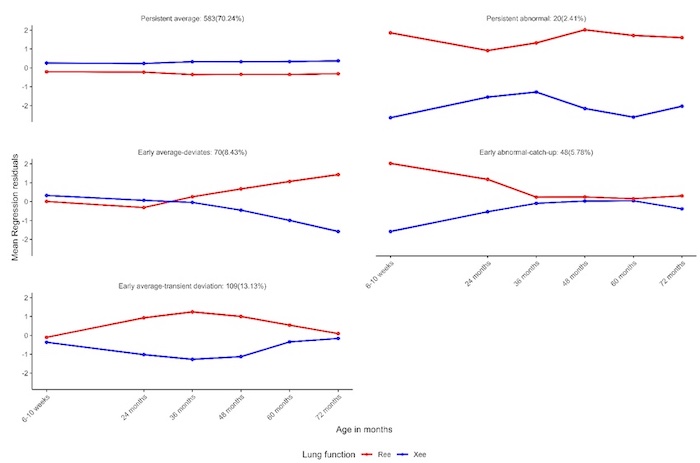Abstract
Background Low or worsening lung function trajectories from childhood are associated with lifelong health risk. Data is lacking on trajectories in infancy and preschool years, a time of critical lung growth with potential for interventions.
Aim Describe lung function trajectories and determinants from birth through 6 years in the Drakenstein Child Health study, an African birth cohort.
Methodology Children were followed from birth, with lung function (intra-breath oscillometry) measured at 6 timepoints (6 wks to 6 yrs), comprehensive exposure information was collected from the antenatal period through childhood. Longitudinal resistance (Ree) and reactance (Xee) at end expiration were modelled using Group-based multi-trajectory modelling to describe joint trajectories of Ree and Xee.
Results 830 children with ? 2 measures were included. Five trajectories were described (Figure 1). 11% had low trajectories (persistent abnormal or deviating from average): risk factors were preterm birth or RSV-lower respiratory tract infection.19% showed catch-up to average (early abnormal-catch-up or transient deviation).
Conclusion Specific early life lung function trajectories show potential for recovery in early childhood. RSV-LRTI and preterm birth are important risk factors for persistently low or worsening trajectories.
Funding Bill & Melinda Gates Foundation, SA-MRC, UK-MRC, Wellcome Trust
